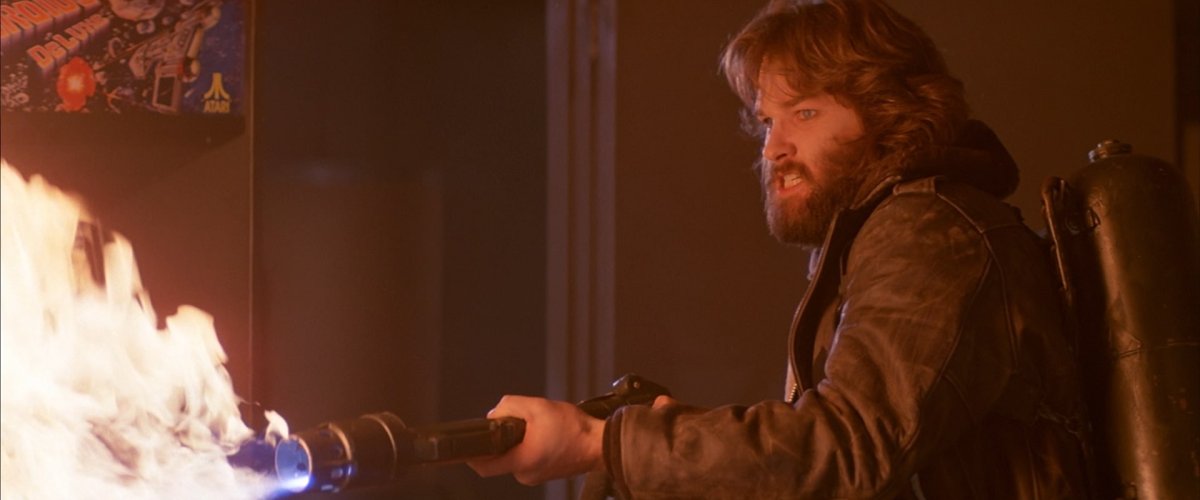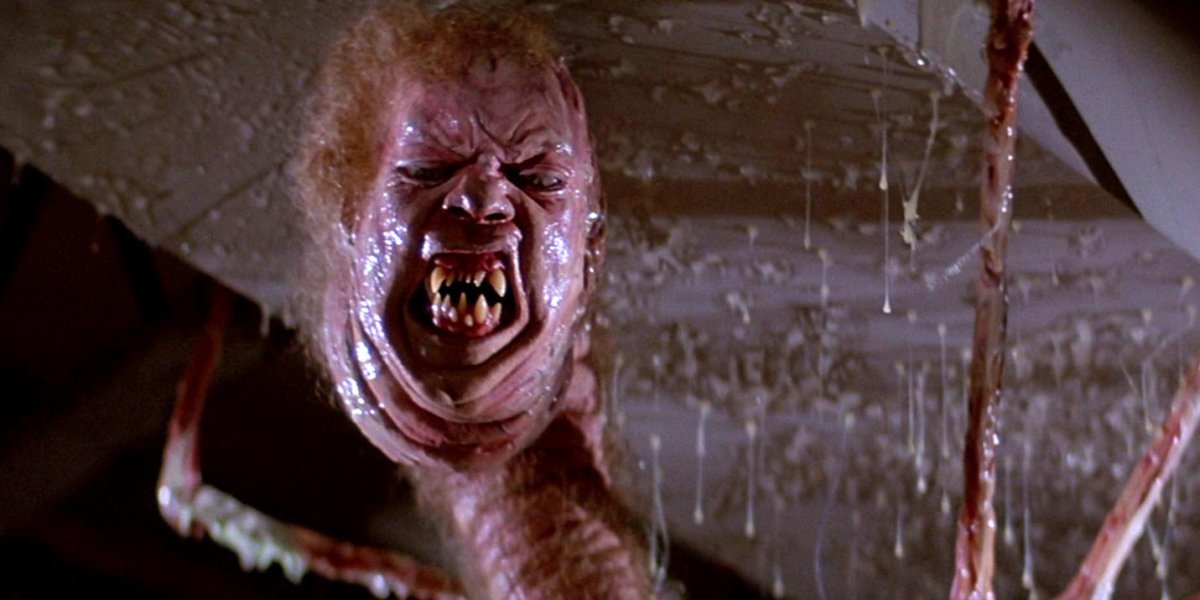A rumored remake of a horror classic may enjoy the benefit of a recent literary discovery that upended our understanding of science fiction author and editor John W. Campbell's 1938 novella, Who Goes There? Following an expedition to Antarctica that unearths a crashed alien spaceship buried in the ice, the novella became the basis for two landmark horror movies: 1951's The Thing from Another World and John Carpenter's 1982 adaptation, The Thing (a third, this time a prequel, was met with indifference in 2011). But the next remake has the potential to be substantially different, since it could be based not on Who Goes There?, but instead on a newly discovered, expanded version of the story, which Campbell titled Frozen Hell.
While conducting research for his 2018 book Astounding: John W. Campbell, Isaac Asimov, Robert A. Heinlein, L. Ron Hubbard, and the Golden Age of Science Fiction, science fiction author and journalist Alec Nevala-Lee came across a reference to a previously ignored treasure trove, the existence of which was buried in Campbell's letters.
Since FROZEN HELL / "Who Goes There?" / THE THING seems to be getting a lot of attention at the moment, here's my blog post from 2018 on how I found Campbell's uncut manuscript, which has inspired talk of a new movie. https://t.co/5PoPJ7HdBQ
— Alec Nevala-Lee (@nevalalee) January 28, 2020
"Sorry... but the Harvard Library got all the old manuscripts I had about eight years ago!" Campbell wrote to the administrator of manuscripts at Syracuse University, who had reached out to the renowned sci-fi editor of Astounding Science Fiction in March of 1966 to ask if Campbell would be interested in donating his papers to the university.
While Campbell's manuscripts had indeed wound up at Harvard's Houghton Library, they had been relegated to offsite storage and gone mostly unnoticed since, until Nevala-Lee sent a research assistant to investigate and photocopy portions of the archival collection. The carton Campbell left to Harvard included about 50 manila folders with penciled titles, each corresponding to a Campbell article or story—frequently written under pen names, such as the Don A. Stuart alias used for Who Goes There?
But it was a folder labeled "Frozen Hell" that first grabbed Nevala-Lee's attention.
While Campbell's letters indicated that Frozen Hell was the author's working title for what would eventually become Who Goes There?, the contents of the folder came as a shock—more than a manuscript, Frozen Hell was practically a different story. In total, there were 112 pages in the rough draft, the typewritten carbons marked up with handwritten corrections and a third potential title: Pandora.
Campbell had hoped to publish Frozen Hell in the popular pulp magazine Argosy. After Argosy passed, Who Goes There? was eventually published in the August 1938 issue of Astounding Science Fiction, but was substantially abridged from Frozen Hell.

"It's clear that Campbell cut the draft only at the request of another editor, and he almost certainly would have published the full story—which he said gave him more satisfaction than anything else he had ever written—if the decision had been left up to him," Nevala-Lee said, further pointing out how careful Campbell was in preserving the complete manuscript among his papers. But, as Nevala-Lee wrote in the preface to Frozen Hell: The Book That Inspired The Thing, Campbell was also pragmatic about making major cuts to stories, even doling out advice to other authors
"When you have trouble with the beginning of the story, that is because you are starting in the wrong place, and almost certainly too soon. Pick out a later point in the story and begin again," Campbell told a young Isaac Asimov.
Who Goes There? opens with the simple words, "The place stank," describing not only the dogs, wet furs, sweaty humans and machine oil crowding the Antarctica research base, but also the recently discovered "thing," which "lay bound with cord and tarpaulin on the table, dripping slowly, methodically onto the heavy planks."

It takes Frozen Hell about 40 pages to get to the same point; an opening section Nevala-Lee described, in the 2019 Frozen Hell preface, as "more than worthy of the rest." Instead of beginning with the alien lifeform already thawing, Frozen Hell narrated the expedition from the beginning, describing the discovery and excavation of the spacecraft.
"In the original draft, you get a better sense of the vast landscape outside the research base, which provides a nice contrast to the claustrophobic backdrop of the second half," Nevala-Lee told Newsweek. "The uncut draft switches halfway through from science fiction to horror, and that transition between genres feels very modern and effective—I think it would work really well in a movie."
Frozen Hell is also loaded with period detail, in a marked contrast with the contemporary settings that both movies chose (The Thing From Another World also moved the action to the Arctic Circle). The complete manuscript even provides an exact date, opening the story on October 2, 1939.
"A period setting would look great onscreen," Nevala-Lee said. "I love the John Carpenter film, but this was Campbell's story first, and there's a strong case to be made that it deserves a more faithful adaptation."

That adaptation may be on the way, with horror site Bloody Disgusting corroborating the existence of a Frozen Hell movie from Universal Pictures and Blumhouse Productions, first reported by editor John Betancourt on the Kickstarter page for the publication of Frozen Hell.
(A telephone and email request for comment to Blumhouse did not receive a response in time for publication.)
Should a new version of The Thing based on Frozen Hell make it to screens, audiences will be able to decide for themselves whether or not the story benefits from the extended, non-horror opening. But whether or not its judged a narrative failure, the movie would be a striking example of how archival work can transform how we see a popular work of fiction, even decades later.
"There's a lot out there that hasn't been explored yet," Nevala-Lee said. "Campbell's papers had been at Harvard for years without being examined, and I found some incredible details in his letters to writers like Robert A. Heinlein and L. Ron Hubbard. I don't think that more than a fraction of the material in these archives has been systematically reviewed, and it represents a huge opportunity for biographers, critics, and fans."
But someone else will have to do the digging into science fiction's past—Nevala-Lee's next book is about Buckminster Fuller.
Uncommon Knowledge
Newsweek is committed to challenging conventional wisdom and finding connections in the search for common ground.
Newsweek is committed to challenging conventional wisdom and finding connections in the search for common ground.
About the writer
To read how Newsweek uses AI as a newsroom tool, Click here.








